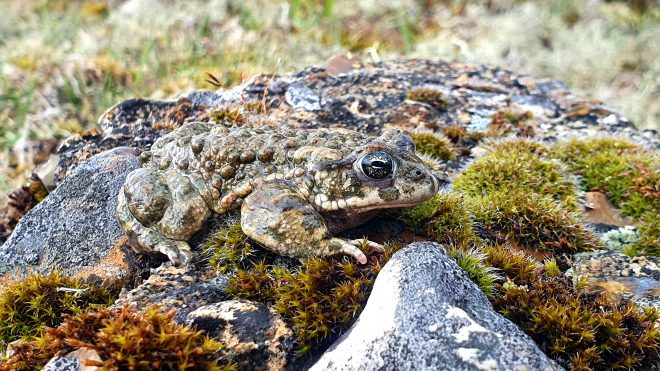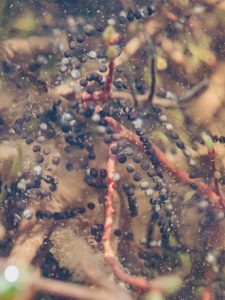Toadally awesome! Natterjacks bounce back in South Downs National Park
May 12, 2025

Their distinctive rasping call can be heard up to a mile away, earning them the reputation as the UK’s loudest amphibian.
Now the natterjack toad, long associated with British folklore, is making a remarkable comeback in the South Downs National Park after battling back from the brink.
Natterjacks were once widespread across the heaths of southern England, but habitat loss and climate change had reduced their range to a single site at Woolmer Forest in Hampshire. They are considered locally extinct in Sussex.

A reintroduction programme started at nearby Blackmoor in 2021 and the latest survey has recorded breeding natterjacks, with 28 toadlets counted. It’s the first time that natterjack toads have been recorded breeding at Blackmoor in 50 years and represents a significant increase in their territory.
The comeback has been made possible by nature recovery work at Blackmoor, led by the Amphibian and Reptile Conservation (ARC) and supported by the South Downs National Park Authority, Natural England and partners. Over the past decade shallow ponds have been created and heathland has been restored through the introduction of cattle grazing, producing perfect conditions for natterjacks to return.
Jack Harper, from ARC, said: “We are delighted that everyone’s hard work is beginning to pay off and that the future of this fascinating species is looking brighter in the region. This is a great first step to recovering the species within the National Park and a good blueprint for future reintroduction efforts. Thank you to all those involved!”
Olivia French, Heathlands Project Team Leader for the South Downs National Park, said: “This is a wonderful success story for nature recovery and shows that wildlife can thrive if given half a chance.
“With a breeding population at Woolmer and now Blackmoor as well, the future for natterjack toads is certainly looking brighter than it was. This area is the last heathland bastion for this iconic species and extending their habitat range is a big step forward in stopping the species becoming locally extinct.”
Over the past century 75 per cent of breeding sites for natterjack toads have disappeared in Great Britain. They are now almost exclusively confined to coastal sand dune systems and grazing marshes in north-west England and the Solway Firth in Scotland.
Olivia added: “They are one of the most at-risk species from climate change because of rising sea levels, so this makes the comeback in Hampshire all the more significant. It’s wonderful to share this good news for nature.”
So how can you help look after these rare and fascinating toads to ensure they continue to thrive? As the natterjack toad favours shallow, temporary ponds, they can only breed in large ‘puddles’. They have an extended breeding season and can spawn from April to August, so it’s important to keep your dog on a lead, and out of shallow ponds and puddles around Woolmer Forest and the perimeter track during these times. The spawn strings of the natterjack are fragile and easily damaged by dogs running through them.
Find out more about the work being done to help this rare toad at www.arc-trust.org/natterjack-toad. Find out more about the National Park’s heathland restoration work at www.southdowns.gov.uk/help-your-heaths/
- Natterjack toads are distinct for the yellow dorsal stripe and the impressive vocal sacks of the males. In spring, on warm, still nights, the adult male natterjacks gather round the breeding pools and emit a rasping call. The louder the call the more chance they have of attracting a female.
- This rare toad is smaller than the more widespread common toad. Adult Natterjack toads are generally between 45mm and 75mm. Roughly the size of a cricket ball!
- Natterjacks have specific conditions for breeding and hunting and require very shallow, warm ephemeral (which means temporary) pools for their spawn.
- They’re also known as the ‘running toad’, as they actively chase their prey so need to be able to travel at speed through very low growing vegetation.
- In the wild, it’s estimated natterjack toads can live up to 12 years.
- To find out about the National Park’s ReNature initiative and to donate visit southdowns.gov.uk/renature/
